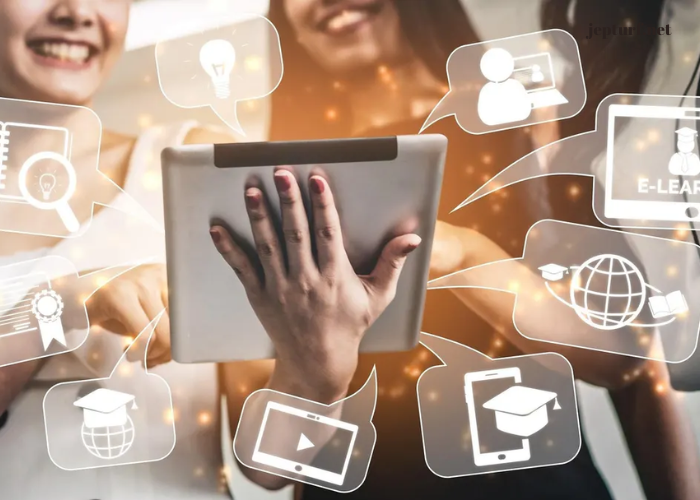Education is a constantly evolving field, shaped by technological advancements, societal changes, and the evolving needs of learners. As we move further into the 21st century, the future of learning is taking on new dimensions, with exciting trends that promise to transform education as we know it. In this article, we will delve into some of the most prominent education trends that are shaping the future of learning.
Personalized Learning
One of the most significant trends in education is the move toward personalized learning. Traditional one-size-fits-all educational models are gradually being replaced by approaches that cater to individual student needs and preferences. Personalized learning leverages technology to provide customized learning experiences, allowing students to progress at their own pace and explore topics that interest them.
Adaptive learning software and artificial intelligence (AI) algorithms play a pivotal role in this trend. These technologies assess each student’s strengths and weaknesses, providing tailored lessons and feedback. For instance, if a student excels in math but struggles with reading, the system can allocate more resources and time to the weaker subject while allowing the student to advance faster in math. This individualized approach not only enhances student engagement but also improves learning outcomes.
Moreover, personalized learning extends beyond academics to encompass students’ interests, passions, and career aspirations. Schools are increasingly offering a variety of extracurricular activities, online courses, and career counseling services to help students explore their interests and plan for their future.
Blended Learning
Blended learning, a combination of in-person and online education, has gained prominence as an effective way to deliver education. This approach capitalizes on the advantages of both traditional classroom instruction and digital resources. It allows for flexibility in scheduling, enables students to access a broader range of courses and resources, and promotes self-directed learning.
The COVID-19 pandemic accelerated the adoption of blended learning, with many schools and institutions adopting online teaching methods. While the pandemic forced this shift, it also highlighted the potential benefits of blending online and in-person learning. As a result, educators are now actively exploring ways to integrate technology and digital tools into their teaching practices, even in a post-pandemic world.
Blended learning also caters to various learning styles and preferences, making education more inclusive. Some students thrive in a traditional classroom setting, while others prefer the flexibility of online learning. Blended learning accommodates these differences, providing a more holistic and adaptable learning experience.
Competency-Based Education
Competency-based education (CBE) is an approach that focuses on the mastery of specific skills and knowledge rather than time spent in a classroom. In CBE programs, students progress at their own pace, advancing when they demonstrate proficiency in a particular skill or concept. This shift away from the traditional credit-hour system empowers students to take control of their learning and ensures they are well-prepared for the workforce.
CBE is particularly beneficial for adult learners and those seeking to acquire specific job-related skills. It allows them to earn credentials and degrees more efficiently, often leading to quicker entry into the job market. Many universities and vocational schools have adopted CBE programs to align their offerings with the demands of today’s job market.
Moreover, CBE provides a more accurate measure of student learning outcomes. Instead of relying solely on grades, which can be influenced by various factors, CBE programs assess students based on their ability to apply what they’ve learned in real-world situations. This approach not only ensures a deeper understanding of the material but also produces graduates who are better equipped to excel in their careers.
Virtual Reality (VR) and Augmented Reality (AR)
Virtual reality and augmented reality technologies are making their way into the classroom, revolutionizing the way students learn and interact with information. These immersive technologies create simulated environments that enhance engagement and comprehension in various subjects.
In VR, students can take virtual field trips to historical sites, explore distant planets, or dissect virtual organisms. This hands-on, experiential learning can significantly enhance understanding and retention of complex concepts. AR, on the other hand, overlays digital information onto the real world, providing interactive and engaging educational experiences. For example, students can use AR apps to explore 3D models of the human body or historical artifacts.
Both VR and AR offer opportunities for collaborative learning and can accommodate various learning styles. They also make education more accessible to students with disabilities, providing unique ways for them to interact with content.
Gamification and Game-Based Learning
Gamification involves applying game elements and principles to educational activities, while game-based learning involves using games as a central component of the learning experience. These approaches leverage the inherent appeal of games to motivate students and enhance their learning outcomes.
Gamification often includes elements such as badges, points, leaderboards, and rewards to incentivize student engagement. For example, a language learning app may award points for completing lessons and offer badges for achieving specific language milestones. These gamified elements can foster a sense of accomplishment and encourage students to continue learning.
Game-based learning takes it a step further by integrating games directly into the curriculum. Educational games can cover a wide range of subjects, from math and science to history and literature. These games offer a dynamic and interactive way for students to explore and apply knowledge while having fun.
Both gamification and game-based learning can increase student motivation, improve problem-solving skills, and enhance critical thinking abilities. They also provide valuable data on student performance, allowing educators to tailor instruction to individual needs
Artificial Intelligence and Machine Learning
Artificial intelligence and machine learning are transforming education by providing personalized recommendations, automating administrative tasks, and enhancing the overall learning experience. AI-powered chatbots, for example, can answer student queries and provide assistance outside of regular class hours, ensuring



